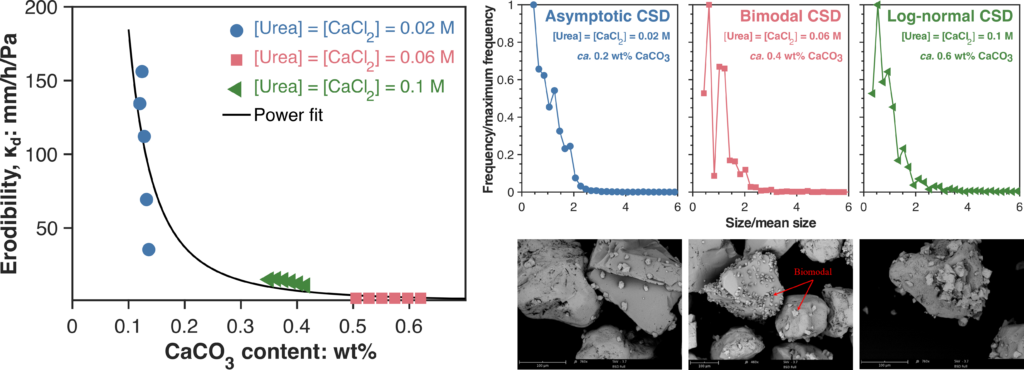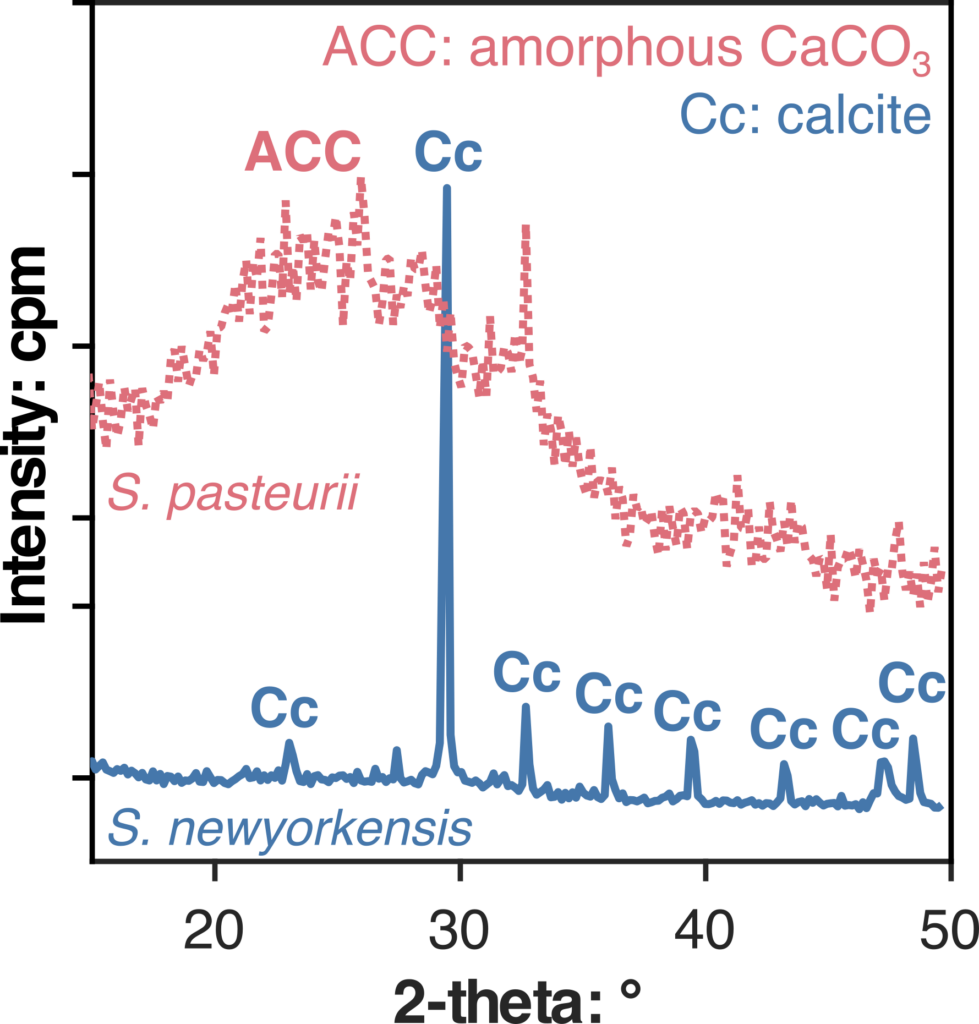Erosion mitigation
Erosion of existing earth dams and levees can be prevented by barriers, such as surface protection (e.g. vegetation, soil-cement), cement grouting of flow channels, cut-off walls, or grout curtains. Although effective, barriers can require large excavation and installation workload and can have adverse environmental impacts. This is particularly the case for cement stabilization, the most common soil stabilization technique. Moreover, barriers can shift preferential seepage paths, thus increasing excess pore pressures in the structure and the risk of failure. Bacteria capable of forming CaCO3 in a process known as microbially induced CaCO3 precipitation (MICP) can be mixed with soils, which leads to the in situ formation of CaCO3. At low CaCO3 contents, the formed CaCO3-sand matrix retains the permeability of the original bulk material, thus avoiding excess pore pressure buildup, whilst enhancing erosion resistance.

Clarà Saracho, A.; Haigh, S. K.; Ehsan Jorat, M. Flume Study on the Effects of Microbial Induced Calcium Carbonate Precipitation (MICP) on the Erosional Behaviour of Fine Sand. Géotechnique 2020, 1–15. https://doi.org/10.1680/jgeot.19.P.350.
Shallow geothermal energy
Soil thermal conductivity has a significant impact on the amount of heat that is exchanged with the ground and is thus a key parameter for designing and optimizing the performance of geothermal systems. The heat storage capacity of soils decreases as a result of desaturation, with reported values of thermodynamic efficiency dropping by up to 40% in sand under dry conditions. This is why the applicability of energy geostructures where soils are partially-saturated due to poor rainfall or high evaporation can be limited. Our studies have shown that CaCO3 mineral contents of less than 1% by weight yield a 200% increase in the thermal conductivity of dry sand. This increase is significant and can substantially improve the coefficient of performance of energy geo-structures embedded within treated soil.
Extensive efforts have been made for the measurement of thermal conductivity in soils. Measurement techniques can be broadly divided into steady state methods and transient methods. Steady state methods use the principle of longitudinal heat flow in steady conditions, while transient techniques measure the time-dependent energy dissipation process within a sample. The steady state guarded hot plate (GHP) method, and the transient thermal probe method are the most used in industry for soil thermal conductivity measurement. Yet, the GHP method suffers from long waiting times required to reach steady state, while commercially available transient sensors are scarce and relatively expensive. To overcome these limitations, our group is developing a novel, cost-effective, miniaturized transient sensor to measure the in-situ thermal conductivity of soils.

Gu, X.; Clarà Saracho, A.; Makasis, N.; Kreitmair, M. J.; Narsilio, G.; Haigh, S. K. A Novel Sensor for In-Situ Thermo-Mechanical Testing and Application to MICP-Treated Soils . Proceedings of the ISSMGE TC215 9 th International Congress on Environmental Geotechnics 25 – 28 June 2023 2023, 5, 87–96. https://doi.org/10.53243/ICEG2023-403.
Methane hydrates
Significant gas hydrate resources are located offshore in the upper sedimentary layers. At present, depressurisation has yielded the highest extraction rates, although sand production has been the major ongoing challenge, terminating two of the three depressurisation trials to date. In this context, MICP could be used to enhance soil resistance and hence reduce sand production. The use of MICP for soil reinforcement has largely been focused on the use of Sporosarcina pasteurii, a high-urease activity microbe isolated from surface soil. However, the severe conditions of the deep-ocean environment, with low temperatures and high pressure, may hamper the viability of this microbe. To address this shortcoming, we isolated a new urease-producing bacterium from the Daini-Atsumi Knoll: Sporosarcina newyorkensis. Results highlight the potential of applying S. newyorkensis for deep seabed applications and show that different CaCO3 mineral phases may be precipitated by different microbial species.

Clarà Saracho, A.; Haigh, S. K.; Hata, T.; Soga, K.; Farsang, S.; Redfern, S. A. T.; Marek, E. Characterisation of CaCO3 Phases during Strain-Specific Ureolytic Precipitation. Sci Rep 2020, 10 (1), 10168. https://doi.org/10.1038/s41598-020-66831-y.
Hata, T.; Clarà Saracho, A.; Haigh, S. K.; Yoneda, J.; Yamamoto, K. Microbial-Induced Carbonate Precipitation Applicability with the Methane Hydrate-Bearing Layer Microbe. J Nat Gas Sci Eng 2020, 81, 103490. https://doi.org/10.1016/j.jngse.2020.103490.
